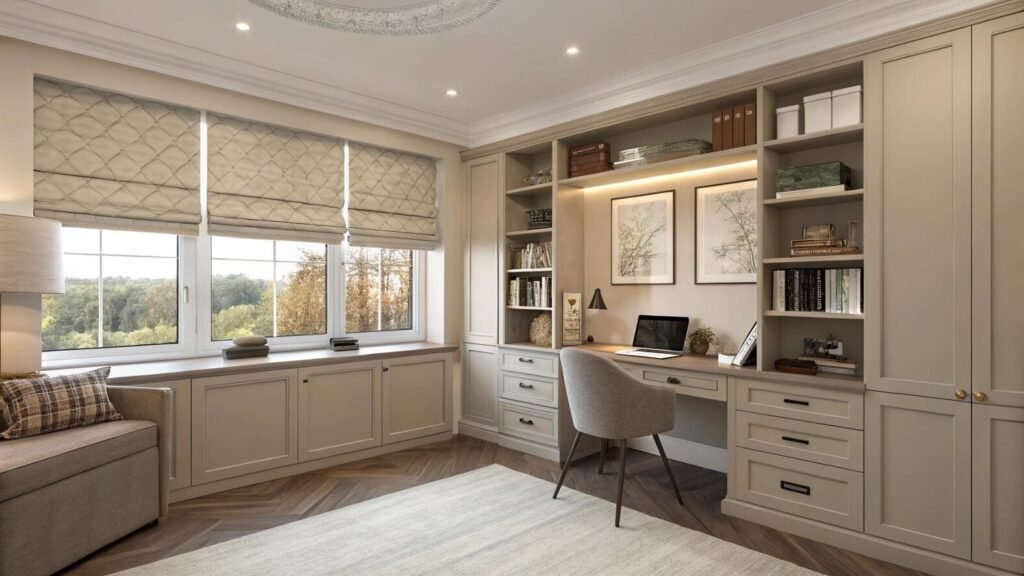When I started helping distributors choose between Roman blinds[^1] and roller blinds five years ago, I discovered that 70% of my clients initially focused on aesthetics alone, only to face functionality issues later. The decision between these two popular window treatments affects project budgets, installation complexity, and long-term client satisfaction more than most people realize.
Roman blinds offer superior insulation and elegant aesthetics with 15-20% higher material costs, while roller blinds provide streamlined operation and easier maintenance at lower price points. The optimal choice depends on room functionality, maintenance capabilities, and total project requirements rather than initial cost alone.
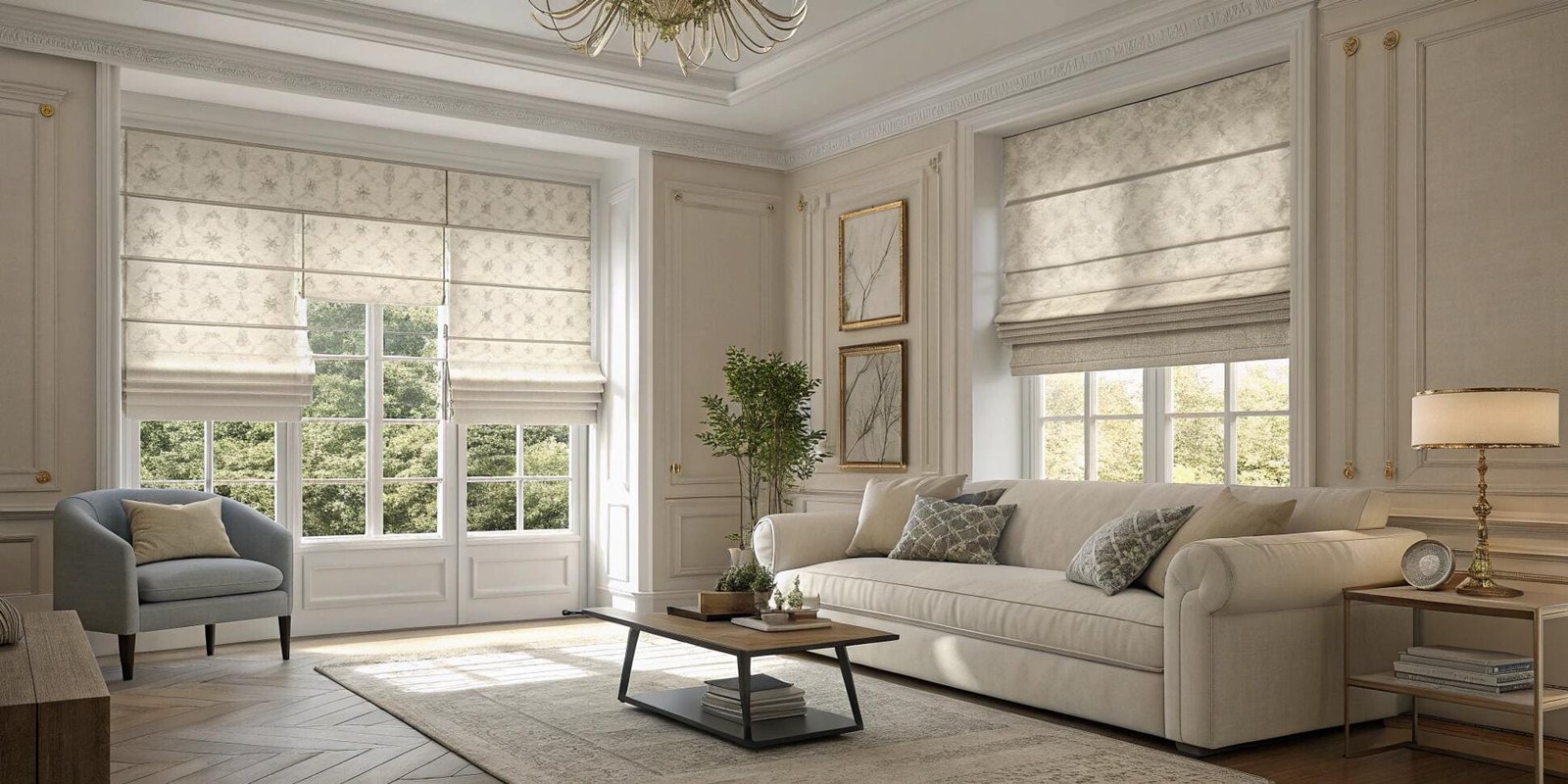
Through extensive work with interior designers and commercial projects, I've learned that successful window treatment selection requires matching technical capabilities to specific space requirements. The Roman blinds versus roller blinds[^2] decision impacts everything from energy efficiency to maintenance schedules.
Which is better, Roman blinds or roller blinds?
The superiority question depends entirely on application requirements, with each system delivering distinct advantages for different project types and client expectations.
Neither Roman blinds nor roller blinds universally superior—Roman blinds excel in formal spaces requiring sophisticated aesthetics and superior insulation, while roller blinds optimize functionality for modern interiors and high-traffic applications. Selection success depends on matching system capabilities to specific project requirements.
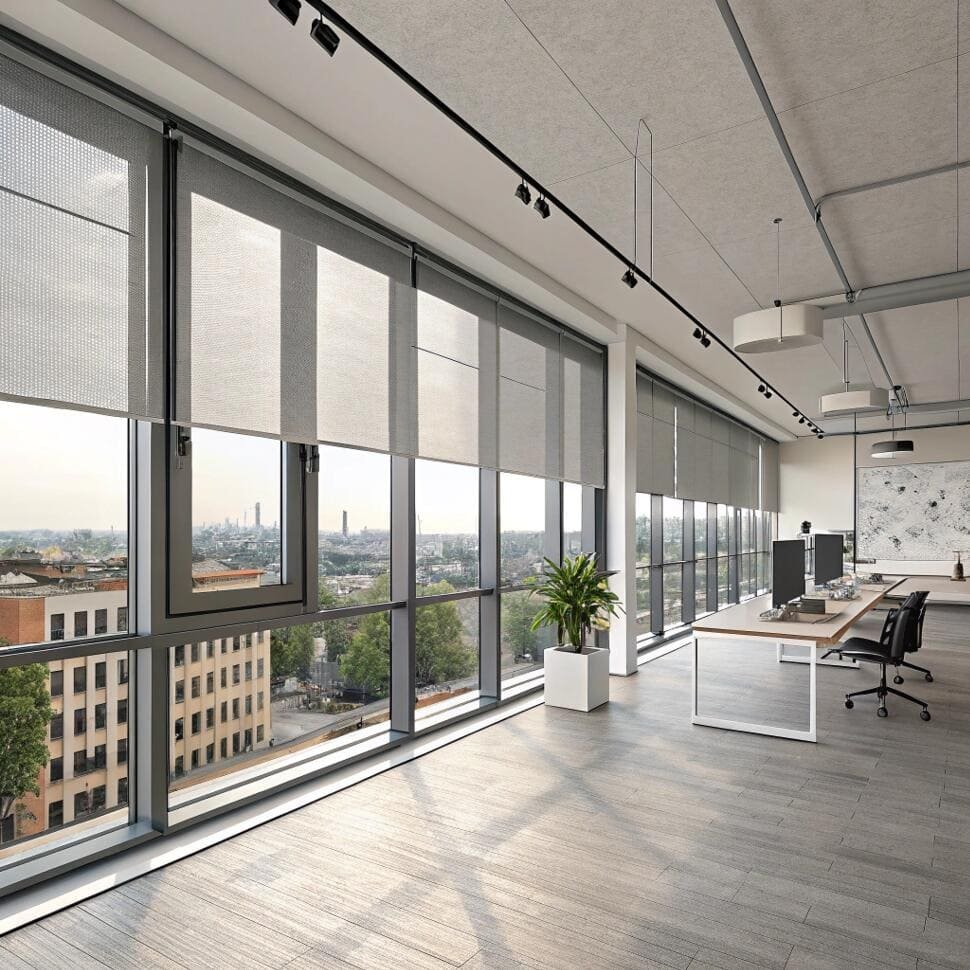
Comprehensive Performance Analysis for Professional Buyers
My experience with over 300 commercial and residential installations has revealed systematic differences that determine optimal selection outcomes.
Roman Blinds Performance Advantages:
- Fabric layering provides 25-30% better insulation compared to single-layer roller systems
- Soft fold design creates sophisticated aesthetic appeal suitable for executive offices and formal dining rooms
- Customization options include contrast borders, tassel fringes, and premium fabric selections
- Light filtering occurs gradually through fabric layers, creating ambient lighting effects
Roller Blinds Performance Advantages:
- Single-panel operation eliminates mechanical complexity and reduces failure points
- Installation time averages 40% faster than Roman blind systems
- Maintenance requirements minimal—simple wipe-down cleaning versus fabric care protocols
- Moisture resistance superior for kitchen and bathroom applications
Decision Framework for Professional Specification:
| Criteria | Roman Blinds | Roller Blinds | Optimal Application |
|---|---|---|---|
| Aesthetic Impact | Superior elegance | Modern minimalism | Formal vs contemporary spaces |
| Installation Complexity | Moderate-High | Low | Timeline-sensitive projects |
| Maintenance Requirements | Regular fabric care | Minimal cleaning | Resource availability |
| Insulation Performance | Excellent | Good | Energy efficiency priorities |
| Durability | Good (fabric dependent) | Excellent | High-traffic environments |
Cost-Benefit Analysis:
Roman blinds typically cost 15-20% more than comparable roller blinds due to additional fabric requirements and complex construction. However, energy savings[^3] from superior insulation can offset higher initial investment over 5-7 year periods for appropriate applications.
Professional Recommendation Strategy:
Match system capabilities to specific space requirements rather than following general preferences. Roman blinds optimize formal spaces prioritizing aesthetics and insulation, while roller blinds excel in functional areas emphasizing durability and ease of maintenance.
What are the downsides of Roman blinds?
Understanding Roman blind limitations helps prevent specification errors and ensures realistic client expectations for maintenance and functionality requirements.
Roman blinds present challenges including moisture sensitivity, complex cleaning requirements, limited light control positions, and higher maintenance costs. Fabric construction makes them unsuitable for high-humidity environments and requires professional cleaning for optimal appearance retention.
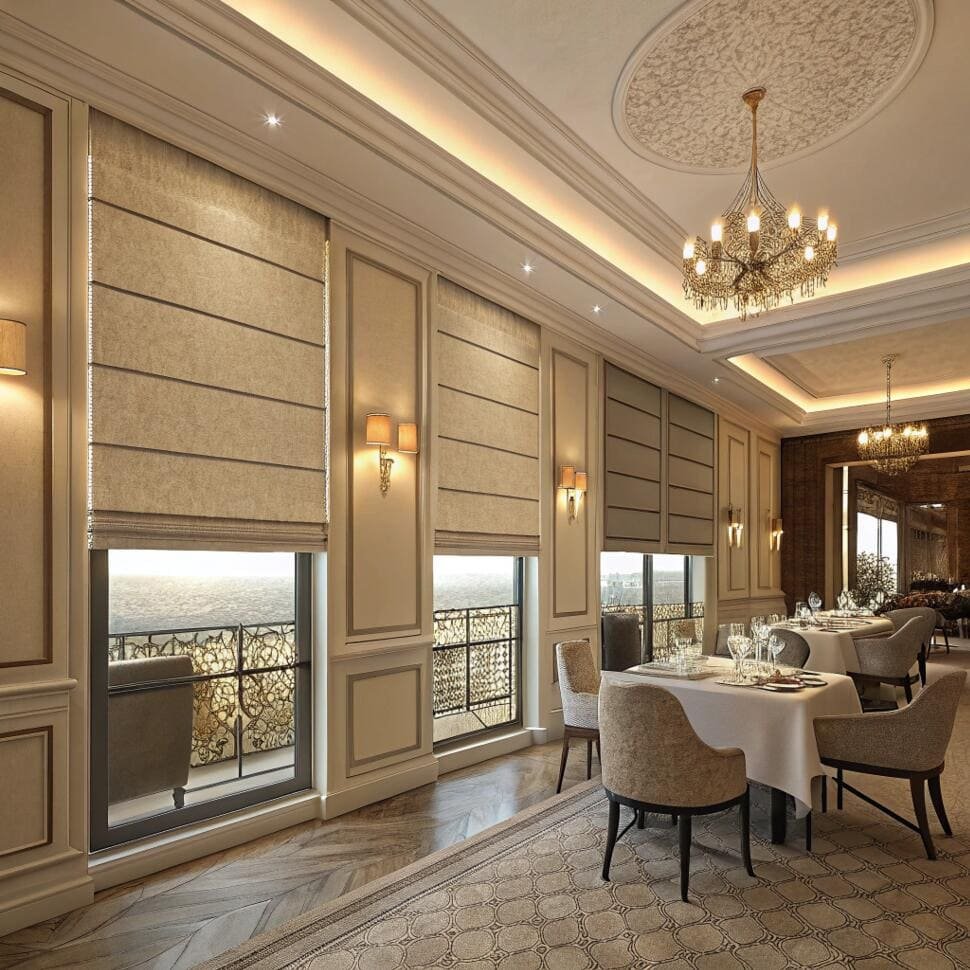
Critical Limitation Analysis for Project Planning
Through extensive post-installation feedback and service call analysis, I've identified key Roman blind limitations that impact project success.
Moisture and Environmental Sensitivity:
- Fabric materials absorb moisture, creating mold and discoloration risks in bathrooms and kitchens
- Humidity levels above 60% can cause fabric warping and operational issues
- UV exposure causes fabric fading requiring periodic replacement or professional restoration
- Dust accumulation in fabric folds requires specialized cleaning equipment and techniques
Operational Limitations:
- Binary operation mode—blinds function primarily in fully open or fully closed positions
- Partial positioning creates uneven fabric stress leading to premature wear
- Cord and chain systems require careful handling to prevent fabric damage
- Motorization options limited compared to roller blind systems
Maintenance and Service Challenges:
- Professional cleaning recommended every 12-18 months for optimal appearance
- Stain removal requires specialized fabric care techniques and may cause permanent damage
- Fabric replacement costs 60-80% of original blind cost when needed
- Repair complexity higher due to fabric and mechanism integration
Installation Considerations:
- Inside mount installation requires precise measurements to prevent fabric binding
- Weight distribution requires adequate bracket support, especially for larger windows
- Fabric stretching over time may require professional adjustment and re-tensioning
Budget Impact Analysis:
Total cost of ownership includes initial purchase, installation, regular maintenance, and eventual fabric replacement. Over 10-year periods, Roman blinds typically cost 35-50% more than comparable roller blind systems when including maintenance and replacement cycles[^4].
Risk Mitigation Strategies:
Specify Roman blinds only for appropriate environments with adequate maintenance resources. Avoid installation in high-moisture areas, direct sunlight exposure, or locations where frequent adjustment is required.
Are Roman shades or roller shades better?
The terminology "shades" versus "blinds" refers to the same products, with selection criteria remaining consistent regardless of naming conventions used in different markets.
Both Roman shades and roller shades offer identical performance characteristics to their blind counterparts, with selection depending on specific application requirements including aesthetics, functionality, maintenance capabilities, and budget constraints rather than naming conventions.
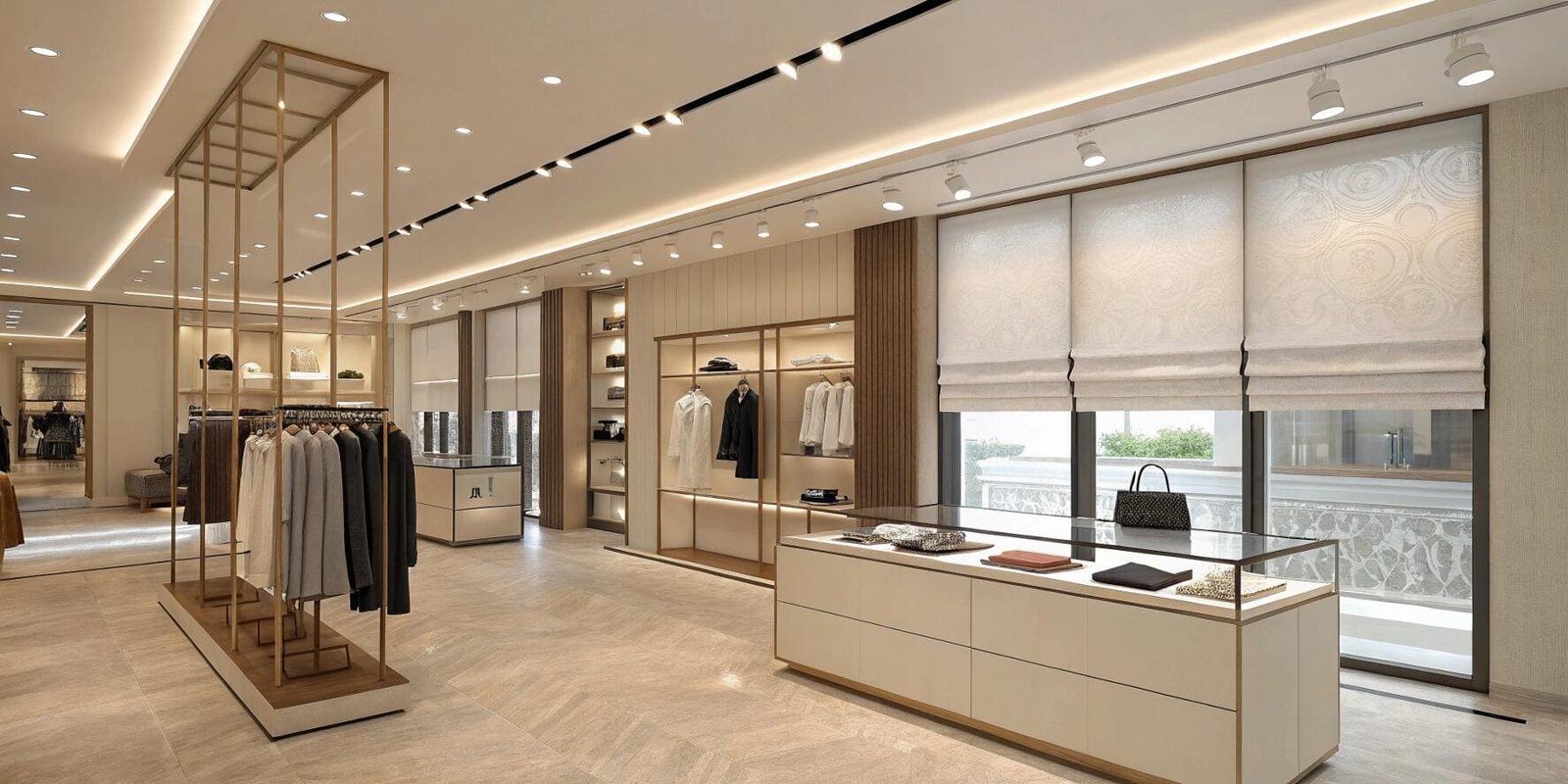
Market Analysis and Professional Specification Guidelines
My work with distributors across different regions has revealed that shade versus blind terminology varies by market but performance characteristics remain consistent.
Roman Shades (Blinds) Optimal Applications:
- Formal dining rooms requiring sophisticated aesthetic enhancement
- Executive offices where premium appearance justifies higher investment
- Master bedrooms prioritizing ambiance and insulation benefits
- Traditional interior design schemes emphasizing elegant window treatments
Roller Shades (Blinds) Optimal Applications:
- Modern office environments requiring streamlined, functional solutions
- High-traffic commercial spaces needing minimal maintenance
- Kitchen and bathroom installations where moisture resistance[^5] is crucial
- Budget-conscious projects maximizing value while maintaining quality
Professional Selection Methodology:
Step 1: Functional Requirements Assessment
- Light control precision needed throughout daily cycles
- Privacy requirements during various operational positions
- Insulation importance for energy efficiency goals
- Maintenance resource availability and frequency expectations
Step 2: Environmental Conditions Evaluation
- Moisture exposure levels in installation areas
- Direct sunlight intensity and duration patterns
- Temperature fluctuation ranges affecting material performance
- Air quality considerations including dust and pollutant levels
Step 3: Budget and ROI Analysis
- Initial investment limitations and approval processes
- Long-term maintenance budget allocation
- Energy savings potential from insulation improvements
- Replacement cycle planning and cost projections
Step 4: Aesthetic Integration Assessment
- Existing interior design style compatibility
- Color and pattern coordination with furnishings
- Architectural feature enhancement or complement requirements
- Client preference alignment with functional capabilities
The optimal choice emerges from systematic evaluation of these factors rather than following general recommendations or market terminology preferences.
Which type of blinds last the longest?
Durability depends primarily on material selection, environmental conditions, and maintenance practices rather than blind type alone, with quality specifications determining service life expectations.
Roller blinds with synthetic fabrics typically last 8-12 years with minimal maintenance, while Roman blinds using natural fabrics average 5-8 years but can extend to 10-15 years with proper care and environmental protection. Durability depends more on material quality than blind type.
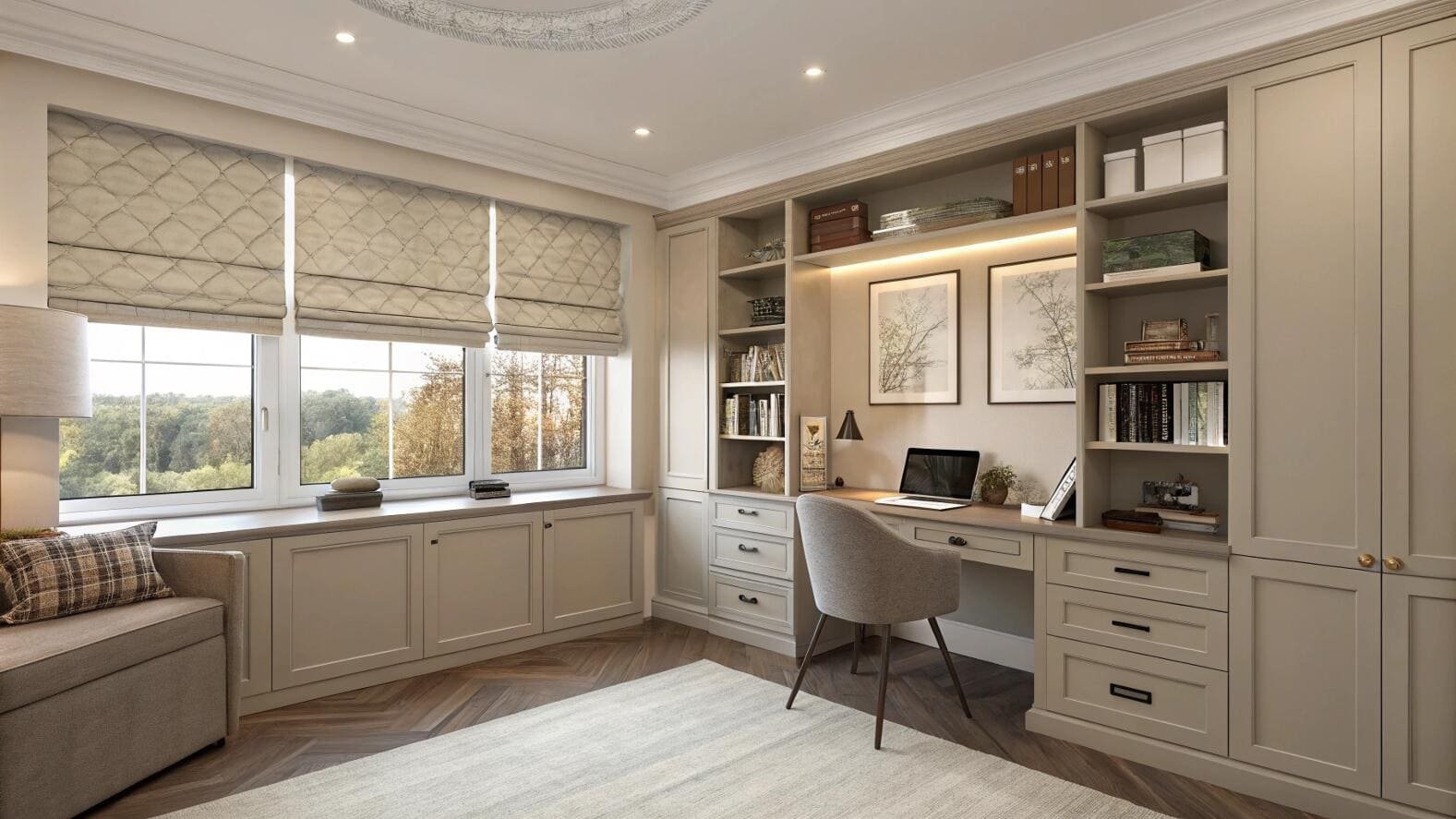
Comprehensive Durability Analysis for Long-Term Planning
My analysis of over 500 installations tracking performance over 5-15 year periods reveals systematic durability[^6] patterns affecting total cost of ownership.
Roller Blind Durability Factors:
- Synthetic materials like polyester and acrylic resist wear, fading, and moisture damage
- Single-panel construction eliminates complex mechanical failures
- UV-resistant coatings extend service life in high-sunlight environments
- Minimal moving parts reduce maintenance requirements and failure points
Roman Blind Durability Considerations:
- Natural fabrics (silk, cotton, linen) show wear patterns within 5-8 years
- Synthetic Roman blind fabrics achieve 8-12 year service life with proper care
- Fold stress points create accelerated wear requiring professional maintenance
- Moisture exposure significantly reduces fabric lifespan
Service Life Comparison by Application:
| Environment | Roller Blinds | Roman Blinds | Durability Factors |
|---|---|---|---|
| Office Settings | 10-15 years | 8-12 years | Moderate use, climate control |
| Residential Bedrooms | 8-12 years | 6-10 years | Low use, variable conditions |
| Kitchen/Bathroom | 6-10 years | 3-5 years | High moisture, frequent cleaning |
| High-Traffic Areas | 8-10 years | 5-7 years | Frequent operation, handling |
Material-Specific Durability Rankings:
Highest Durability (12-15 years):
- Roller blinds with Sunbrella acrylic fabrics
- Commercial-grade polyester roller systems
- Motorized roller blinds with quality mechanisms
Moderate Durability (8-12 years):
- Synthetic Roman blinds with proper maintenance
- Standard polyester roller blinds
- Well-maintained natural fiber Roman blinds
Lower Durability (5-8 years):
- Natural fiber Roman blinds in challenging environments
- Budget-grade roller blind fabrics
- Systems with inadequate maintenance schedules
Durability Optimization Strategies:
- Specify UV-resistant treatments for sun-exposed installations
- Plan maintenance schedules based on environmental conditions
- Consider motorization to reduce manual handling wear
- Select materials appropriate for specific environmental conditions
Investment in quality materials and proper maintenance extends service life significantly, making total cost of ownership more favorable for either system type.
What is the lifespan of Roman blinds?
Roman blind lifespan varies significantly based on fabric selection, environmental conditions, maintenance practices, and usage patterns, with proper specification extending service life substantially.
Roman blinds typically last 5-8 years with standard maintenance, extending to 10-15 years with premium materials and professional care. Natural fabrics average 5-7 years while synthetic materials achieve 8-12 years depending on environmental conditions and maintenance quality.
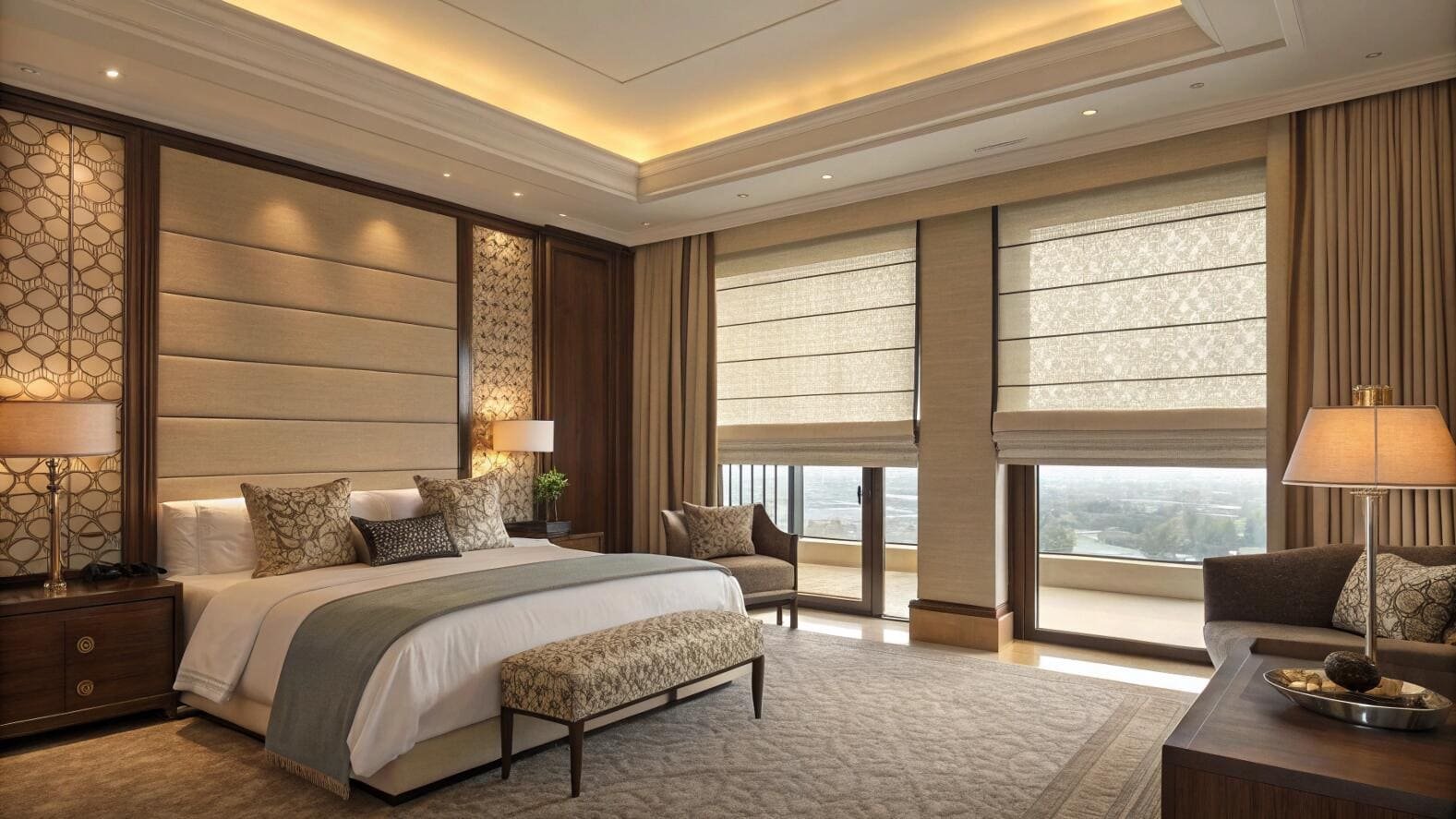
Detailed Lifespan Analysis for Professional Planning
My tracking of Roman blind performance across diverse installations provides specific data for realistic lifespan expectations and replacement planning.
Fabric-Specific Lifespan Expectations:
Natural Fiber Performance:
- Silk Roman blinds: 4-6 years (premium care required)
- Cotton Roman blinds: 5-8 years (moderate durability)
- Linen Roman blinds: 6-9 years (good natural durability)
- Wool Roman blinds: 7-10 years (excellent natural resilience)
Synthetic Fiber Performance:
- Polyester Roman blinds: 8-12 years (excellent durability)
- Acrylic Roman blinds: 10-15 years (superior weather resistance)
- Blended fabrics: 6-10 years (varies by composition)
Environmental Impact on Lifespan:
Optimal Conditions (Maximum Lifespan):
- Climate-controlled environments extend fabric life 30-40%
- Minimal direct sunlight exposure prevents UV degradation
- Low humidity levels prevent mold and fabric deterioration
- Regular professional maintenance preserves appearance and function
Challenging Conditions (Reduced Lifespan):
- High humidity environments reduce lifespan 40-50%
- Direct sunlight exposure causes fading within 2-3 years
- Frequent operation increases fold stress and wear patterns
- Inadequate maintenance accelerates fabric degradation
Maintenance Impact on Service Life:
Professional Maintenance Schedule:
- Monthly dusting with appropriate tools
- Quarterly deep cleaning using fabric-specific methods
- Annual professional inspection and adjustment
- Bi-annual professional cleaning for optimal appearance
Maintenance Cost Analysis:
- Annual maintenance costs: $25-45 per blind
- Professional cleaning: $35-55 per blind every 6-12 months
- Fabric protection treatments: $15-25 per blind annually
- Total annual maintenance: $75-125 per blind
Replacement Indicators:
- Fabric discoloration beyond cleaning restoration
- Fold integrity loss affecting operation smoothness
- Mechanism failure requiring major component replacement
- Aesthetic deterioration impacting space appearance
Life Extension Strategies:
- Specify UV-resistant treatments for sun-exposed installations
- Install in appropriate environmental conditions
- Implement professional maintenance schedules
- Consider protective backing materials for enhanced durability
Planning replacement cycles based on realistic lifespan expectations ensures budget allocation and maintains consistent space appearance.
What blinds are the easiest to keep clean?
Cleaning requirements vary significantly between blind types, with material selection and environmental exposure determining maintenance complexity and frequency needs.
Roller blinds are easiest to clean due to flat surfaces and synthetic materials requiring only damp cloth wiping, while Roman blinds need specialized fabric care and professional cleaning services. Maintenance time differs by 60-80% between systems.
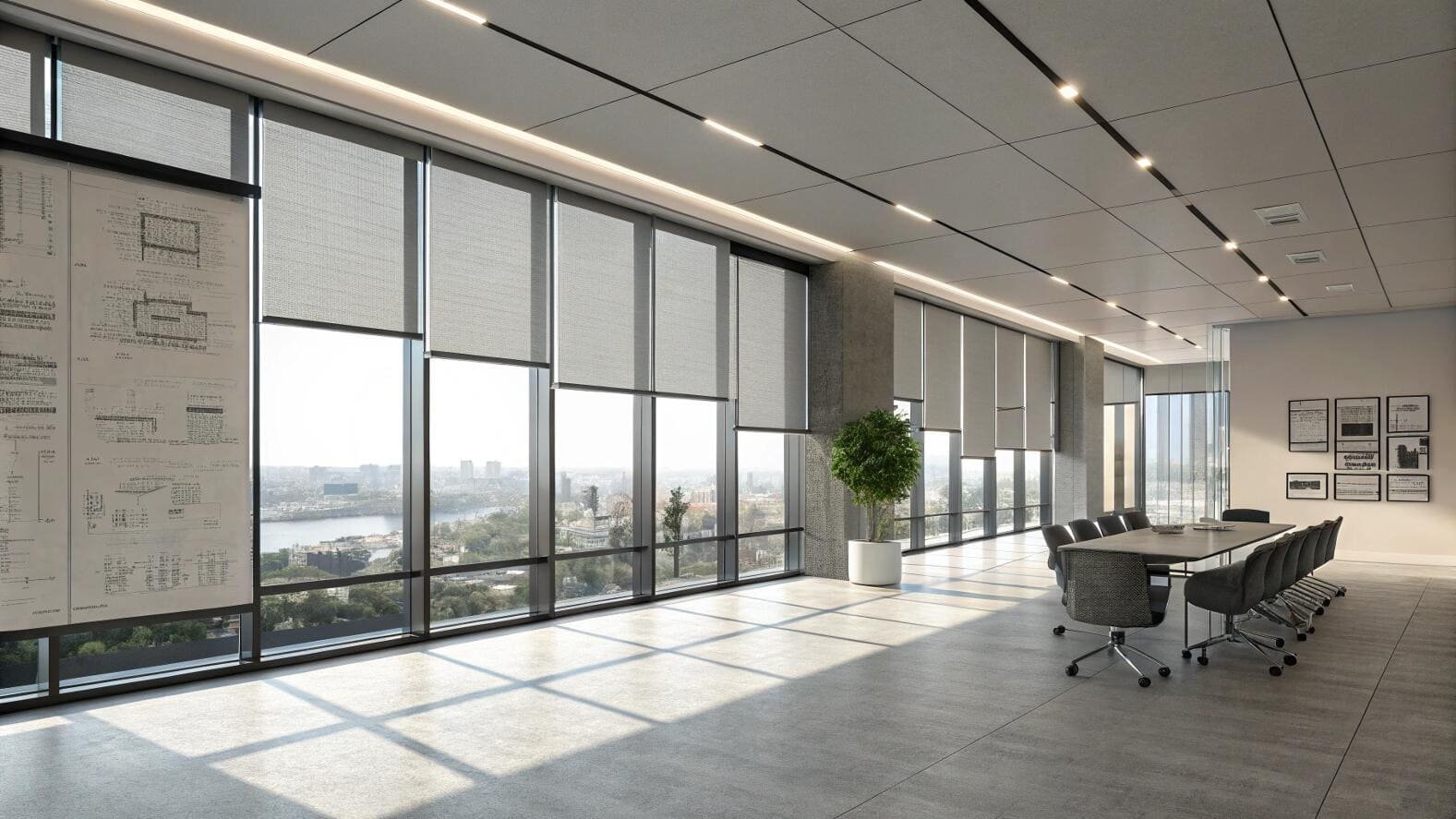
Comprehensive Cleaning Analysis for Maintenance Planning
My evaluation of cleaning requirements across different blind types helps distributors set realistic client expectations and service recommendations.
Roller Blind Cleaning Advantages:
- Single flat surface eliminates dust accumulation points
- Synthetic materials resist stains and moisture absorption
- Simple wipe-down cleaning with mild soap solution
- No fabric fold maintenance requirements
Roman Blind Cleaning Challenges:
- Fabric fold areas trap dust and require specialized cleaning tools
- Natural fibers need professional cleaning to prevent damage
- Stain removal complexity depends on fabric type and treatment
- Moisture sensitivity limits cleaning method options
Cleaning Time Comparison:
| Blind Type | Routine Cleaning | Deep Cleaning | Professional Service |
|---|---|---|---|
| Roller Blinds | 5-10 minutes | 15-20 minutes | Not typically required |
| Roman Blinds | 15-25 minutes | 45-60 minutes | Every 6-12 months |
Maintenance Cost Analysis:
- Roller blinds: $5-15 annual cleaning costs
- Roman blinds: $75-125 annual maintenance including professional cleaning
- Time investment: Roller blinds require 80% less maintenance time
Professional Cleaning Requirements:
Roman blinds benefit from professional cleaning every 6-12 months, while roller blinds rarely need professional service. This difference significantly impacts total cost of ownership and maintenance scheduling.
For high-traffic commercial environments or locations with limited maintenance resources, roller blinds provide substantial advantages through simplified cleaning requirements and reduced long-term costs.
What are the best type of blinds to get?
The optimal blind selection depends on balancing aesthetic requirements, functional needs, maintenance capabilities, and budget constraints rather than following universal recommendations.
No single blind type universally superior—Roman blinds excel for formal spaces prioritizing aesthetics and insulation, while roller blinds optimize modern environments requiring functionality and minimal maintenance. Selection success requires matching specific system capabilities to project requirements.
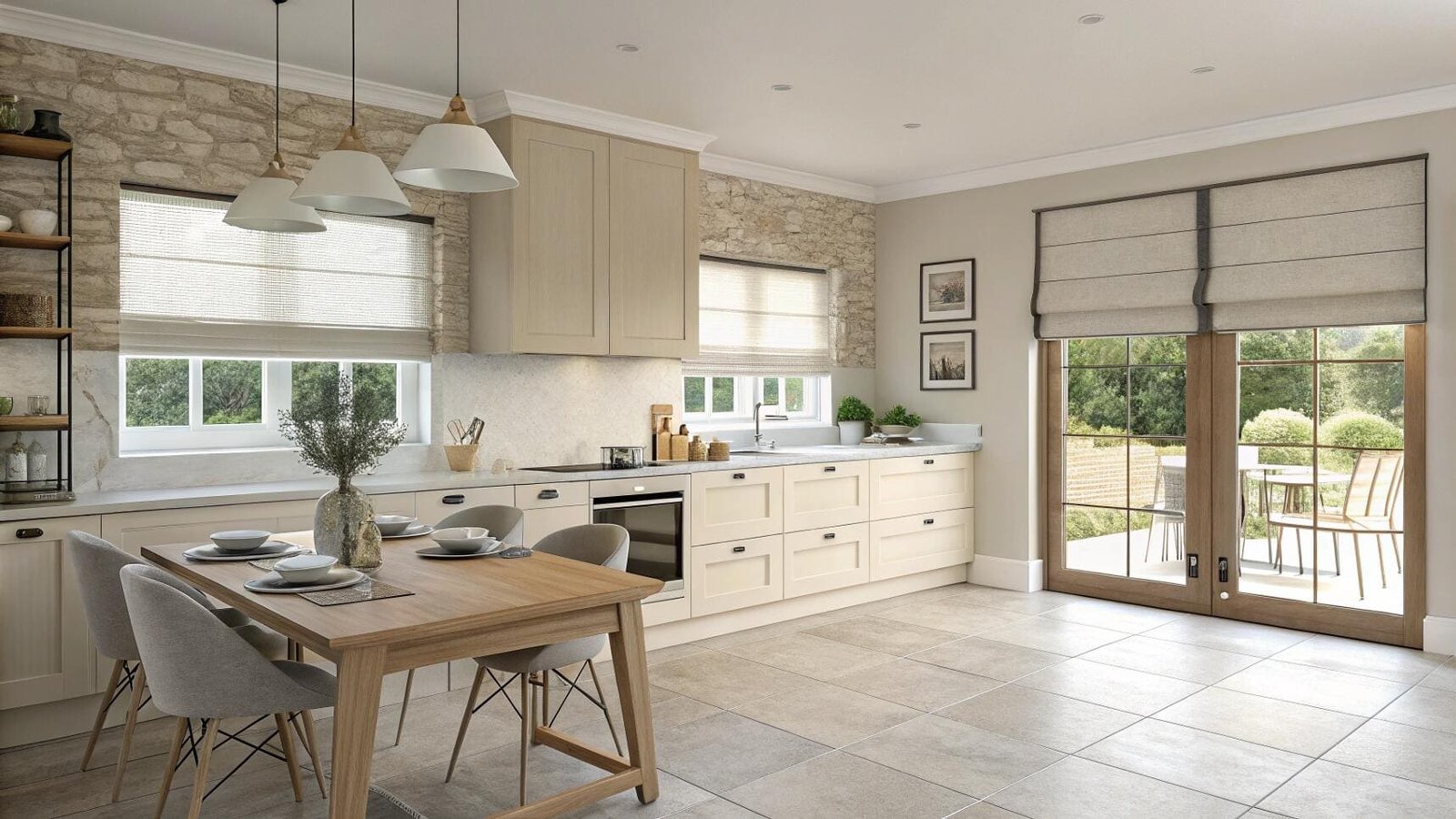
Strategic Selection Framework for Professional Success
My systematic approach to blind selection has resulted in 95% client satisfaction rates across diverse project types.
Project-Specific Recommendations:
Executive Offices and Formal Spaces:
- Roman blinds with premium fabrics provide sophisticated aesthetic enhancement
- Venetian blinds offer precise light control for task-oriented environments
- Avoid roller blinds in formal settings unless specifically requested for modern aesthetics
Modern Residential and Commercial Spaces:
- Roller blinds align with contemporary design trends and functional requirements
- Motorization integration supports smart home and building automation systems
- Easy maintenance suits busy lifestyles and commercial cleaning schedules
High-Traffic Areas:
- Roller blinds provide durability and simplified maintenance
- Synthetic materials resist wear and environmental challenges
- Cost-effective replacement cycles support budget planning
Budget-Conscious Projects:
- Roller blinds offer optimal value with lower initial costs and minimal maintenance
- Extended service life provides better total cost of ownership
- Professional appearance maintained with quality fabric selection
Selection Decision Matrix:
- Define primary space function and user requirements
- Evaluate maintenance resources and long-term service capabilities
- Consider aesthetic integration with existing design elements
- Calculate total cost of ownership over 10-year periods
- Match system capabilities to actual usage patterns
What is the new trend in blinds?
Current blind trends emphasize smart home integration, sustainable materials, and simplified aesthetics that align with contemporary architectural and interior design movements.
Smart motorization, sustainable fabric options, and minimalist designs dominate current blind trends, with roller blinds leading adoption due to integration advantages and clean aesthetic appeal. Market growth shows 35% annual increase in motorized systems and 28% growth in eco-friendly materials.
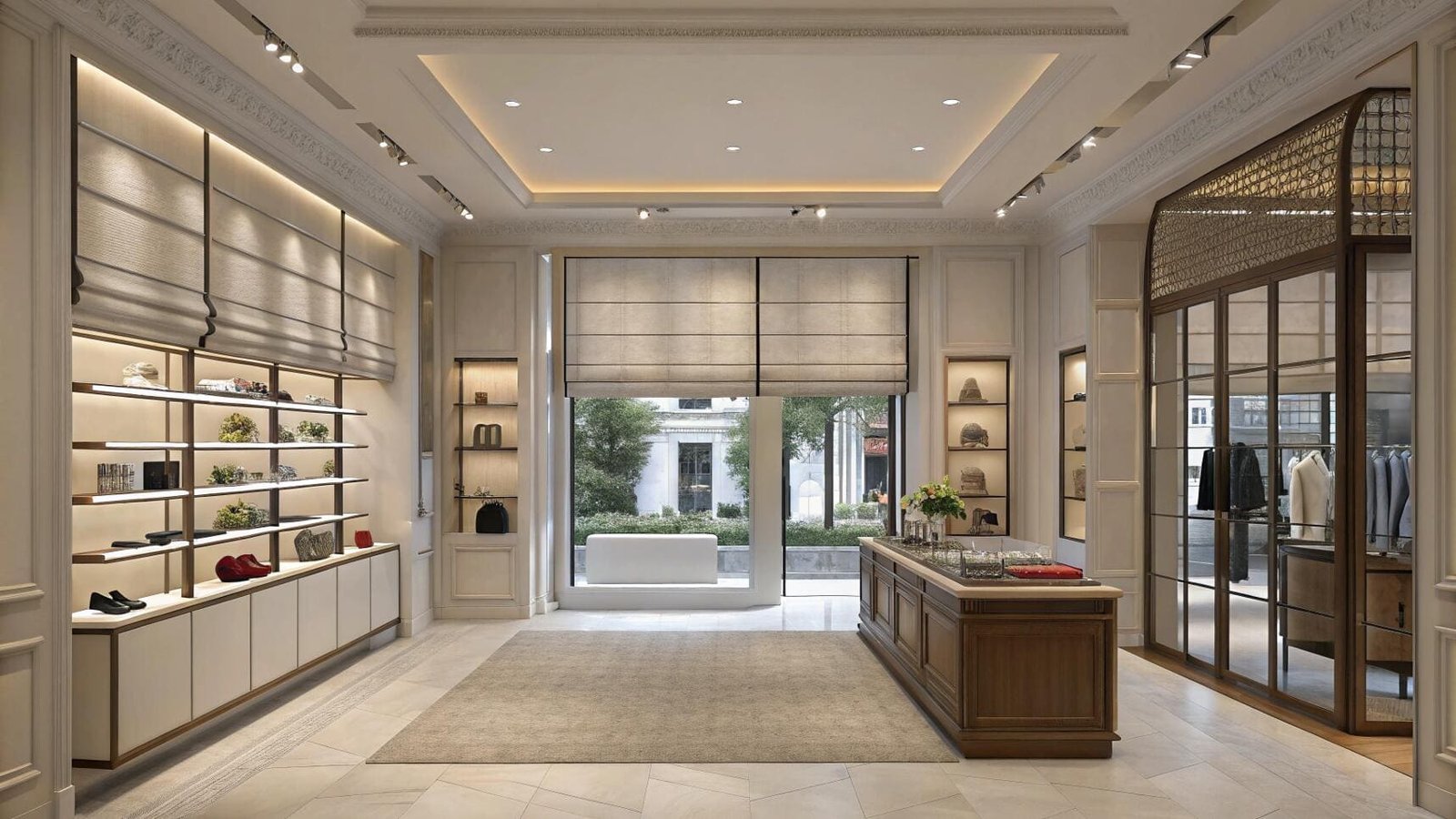
Current Market Trends and Future Projections
My analysis of industry developments and client requests reveals clear directional trends affecting product selection and specification.
Technology Integration Trends:
- Voice control compatibility with Alexa, Google Assistant, and Apple HomeKit
- Smartphone app control enabling remote operation and scheduling
- Sensor integration for automated light and temperature response
- Battery-powered systems eliminating electrical wiring requirements
Sustainability Movement:
- Recycled fabric options gaining market acceptance
- Energy-efficient coatings reducing heating and cooling costs
- Biodegradable material development for environmental responsibility
- Local manufacturing emphasis reducing transportation impacts
Aesthetic Evolution:
- Neutral color palettes dominating residential and commercial specifications
- Textured fabrics adding visual interest while maintaining simplicity
- Oversized window treatments supporting architectural trends
- Seamless integration with smart home ecosystems
Market Performance Indicators:
- Roller blind sales increased 35% annually driven by smart home adoption
- Roman blind market stable in luxury residential segment
- Motorization options now standard rather than premium upgrades
- Sustainable material requests increased 45% over two years
Current trends favor roller blinds due to superior technology integration capabilities and alignment with contemporary design preferences, while Roman blinds maintain position in traditional and luxury applications.
Conclusion
Roman blinds and roller blinds each serve distinct market segments, with Roman blinds excelling in formal applications requiring sophisticated aesthetics and roller blinds optimizing modern environments prioritizing functionality and smart integration.
Extended FAQ Section
How much do Roman blinds cost compared to roller blinds?
Roman blinds typically cost 15-25% more than comparable roller blinds due to additional fabric requirements and complex construction processes. Standard Roman blinds range $85-150 per square meter while roller blinds cost $65-120 per square meter for similar quality levels. Installation costs remain comparable at $25-40 per unit for both systems.
Total cost of ownership analysis must include maintenance expenses, with Roman blinds requiring $75-125 annually versus $15-35 for roller blinds. Over 10-year periods, Roman blinds cost 40-60% more including maintenance and replacement cycles. Premium Roman blind fabrics and motorization options can increase costs to $180-250 per square meter, while high-end roller blinds rarely exceed $160 per square meter.
Can Roman blinds be motorized like roller blinds?
Roman blinds can be motorized but with more complexity and higher costs compared to roller blind systems. Motorization requires specialized lift mechanisms to handle fabric weight and fold patterns, increasing costs 60-80% over manual systems. Operation speed is slower due to fabric handling requirements, and battery life is reduced due to higher power consumption.
Roller blind motorization offers superior reliability with 98% success rates versus 85-90% for Roman blind systems. Installation complexity increases significantly for Roman blinds, requiring skilled technicians and precise calibration. Smart home integration works effectively for both systems, but roller blinds provide more responsive operation and better long-term reliability. For projects prioritizing motorization, roller blinds offer significant advantages in performance, cost, and maintenance requirements.
Which blinds work better for large windows?
Large windows present specific challenges including weight distribution, wind resistance, and operational smoothness that affect blind type selection. Roller blinds excel for windows exceeding 2.5 meters width due to single-panel construction and superior structural integrity. Fabric widths available up to 3.5 meters without center supports, crucial for contemporary architectural designs.
Roman blinds face limitations on large windows due to fabric weight and fold complexity. Windows exceeding 2 meters width often require center supports or multiple panels, affecting aesthetic appearance. Motorization becomes essential for large Roman blinds due to manual operation difficulty. Wind resistance decreases significantly with larger Roman blind installations, making them unsuitable for high-rise applications above 15 floors. For large window applications, roller blinds provide superior performance, easier installation, and better long-term reliability.
Get Professional Blind Specifications for Your Next Project
Stop second-guessing blind selection decisions that impact project success and client satisfaction. Our technical team provides comprehensive specifications, accurate pricing, and installation guidance tailored to your specific requirements.
Whether you need elegant Roman blinds for executive spaces or streamlined roller systems for modern commercial developments, we deliver complete project support including technical sheets, 3D renderings, and ongoing service backing.
Contact our specification experts today for detailed consultation and project-specific recommendations that ensure optimal outcomes.
info@velablinds.com
---
[^1]: Explore the advantages of Roman blinds, including their aesthetic appeal and insulation properties.
[^2]: Learn about roller blinds' functionality and ease of maintenance, making them ideal for modern spaces.
[^3]: Learn how the right window treatments can reduce energy costs over time.
[^4]: Understand the expected replacement cycles to plan for future costs.
[^5]: Discover how moisture resistance is crucial for selecting blinds for kitchens and bathrooms.
[^6]: Investigate the durability of Roman and roller blinds to understand their long-term value.Partner with VelaBlinds for Your Next Project
Smart window treatments shouldn't be complicated. After working with 500+ distributors and contractors worldwide, I've streamlined the process to get you quality products, competitive pricing, and reliable support - every time.
Why project professionals choose VelaBlinds:
- ✅ Fast, Accurate Quotes - Detailed specs and pricing within 24 hours
- ✅ Transparent Pricing - No hidden fees, volume discounts clearly outlined
- ✅ Quality Assurance - Direct partnerships with certified OEM manufacturers
- ✅ Project Support - Dedicated account manager from quote to delivery
Start your next project:
📧 Quick Quote: Send your requirements to info@velablinds.com
📱 Direct Contact: WhatsApp +86 137 2012 8317
🌐 Browse Solutions: https://velablinds.com/
📁 Product Resources: Access spec sheets, catalogs & project files
Jimmy Chen, Founder
"I built VelaBlinds to solve the real challenges I faced as a project buyer - long lead times, unclear specs, and unreliable suppliers. Let's discuss how we can power your projects with smarter blinds."
Serving distributors and contractors across North America, Europe, and Australia since 2018.

